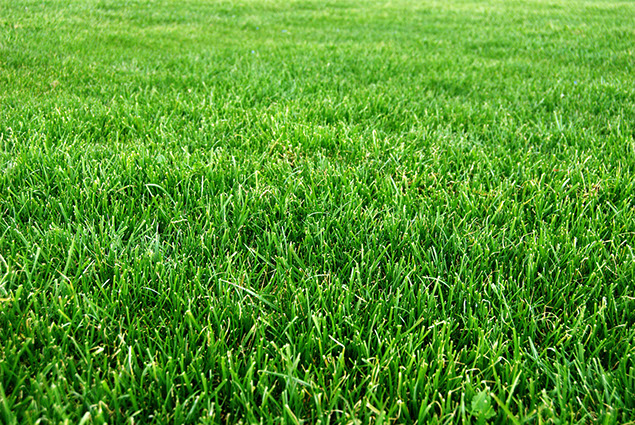Can artificial turf get hot enough to fry an egg on? Chair Professor of Geography CY Jim decided to test that out during his research on the heat effects of artificial turf.
Professor Jim spent two summers taking detailed measurements on artificial and natural turfs to compare their solar and terrestrial radiation and heat regimes at different times of the day and at different heights. His results were shocking. When air temperature reached 35 degrees Celsius, the surface of artificial turf spiked to close to 70 degrees – compared with 38 degrees for natural turf. Even at 50 centimetres above ground, the temperature at the artificial turf site remained higher although the difference was less dramatic.
“The very hot artificial surface can heat up human bodies by infrared radiation, conduction and convection,” he said. “It’s not healthy to the athletes playing on such fields because there’s a danger of heat stroke. And it’s particularly harmful to children who are short, which means a larger proportion of their body would be exposed to such high temperature. As children’s heat-regulation physiology is less able to cool their bodies, it means a double jeopardy to their health.
“I actually tried to cook an egg on the artificial turf,” he continued. “It was pretty well-cooked I must say.”

![]() It’s not healthy to the athletes playing on such fields because there’s a danger of heat stroke. And it’s particularly harmful to children who are short, which means a larger proportion of their body would be exposed to such high temperature.
It’s not healthy to the athletes playing on such fields because there’s a danger of heat stroke. And it’s particularly harmful to children who are short, which means a larger proportion of their body would be exposed to such high temperature. ![]()
Professor CY Jim
Urban heat island effect
The high temperatures are more than a health problem. Professor Jim’s concern about artificial turf stems from his interest in urban greening and the urban heat island effect, which causes city temperatures to be higher than those in the countryside. As more places seek to replace natural grounds with artificial surfaces, he is keen to raise awareness about the contribution this makes to urban heat.
In Hong Kong, for instance, the Government has already replaced nearly half of its soccer pitches with artificial turf, which is cheaper and easier to maintain. Even HKU has jumped on the artificial bandwagon, with three of its four sports grounds using artificial turf. However, this also provided an ideal setting for conducting experiments and the Manager was happy to rearrange schedules so Professor Jim could take measurements on both the artificial and natural turfs in the summers of 2013 and 2014.
The results, published this year in the scholarly journal Applied Energy, provide a comprehensive thermal-cum-radiation profile for both types of surfaces so definitive comparisons can be made. “Most previous studies of artificial turf have only looked at daytime temperature. I looked at the 24-hour cycle and the microclimatic situation under different weather conditions,” he said.
Interestingly, at nighttime artificial turf lost temperature far more quickly and to a greater extent than natural turf, indicating the wider extremes of temperature related to artificial turf. Artificial turf also did not offer the cooling effect of water evaporation that comes from natural turf, because water runs off and is not absorbed by the surface and synthetic substrate material.
The smell
In fact, water pollution is another concern with artificial turf, although not directly related to Professor Jim’s research. The turf substrate is made of rubber granules and as the water seeps through it can release toxic substances that contaminate surface and ground water. The rubber is also a problem when the sun shines on the surface because this can release harmful gases called volatile organic compounds. Waste rubber tyres are so harmful to the environment that some landfills in other countries refuse to accept them.
“When I conducted my study at the HKU fields, I hated the smell, it was awful. I was there for hours on end and it smelled of heated rubber. I feel pity for the athletes playing on such fields,” he said. “By the way, some countries advise people not to sit or lie on artificial turf, only to run or step on it. Why? Because it is so harmful to health.”
Some places are starting to move away from artificial turf. Tokyo, for instance, has converted many sports fields to natural turf to combat the urban heat island effect. Professor Jim hopes his research will inspire similar changes locally and elsewhere, especially because it is consistent with the loftier goal of protecting the environment.
“The Hong Kong Government has pronounced that it is doing things to deal with climate change on the one hand, but on the other hand you have a government department converting natural turf to a synthetic turf that aggravates climate change. It’s a failure of coordination,” he said. “Hong Kong’s urban temperatures have been rising, particularly over the past two decades. We don’t want to rub salt into the wound by converting more turfs to artificial.”
Vertical temperature profiles of the natural and artificial turf sites on a sunny day at six two-hourly daytime sampling points.
The microclimatic sensors and dataloggers installed at the field at HKU’s sports centre for the artificial turf study.
Next

The Harmful Effects Of Artificial Turf
Artificial turf is a low-maintenance option for keeping playing fields green and readily available for use, especially in hot, wet climates. But work by Professor CY Jim is adding to the evidence that artificial turf can be hazardous to both health and the environment.




